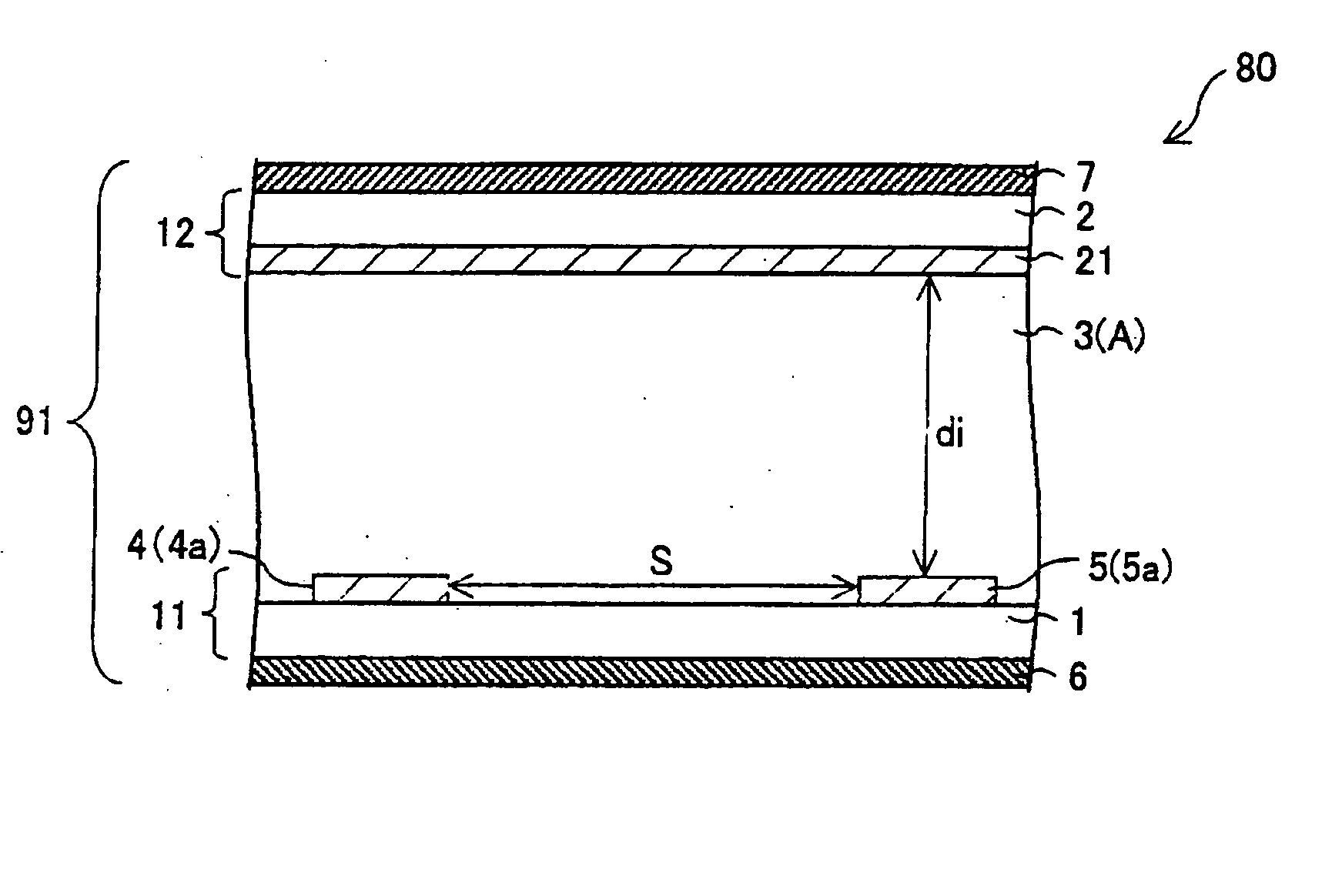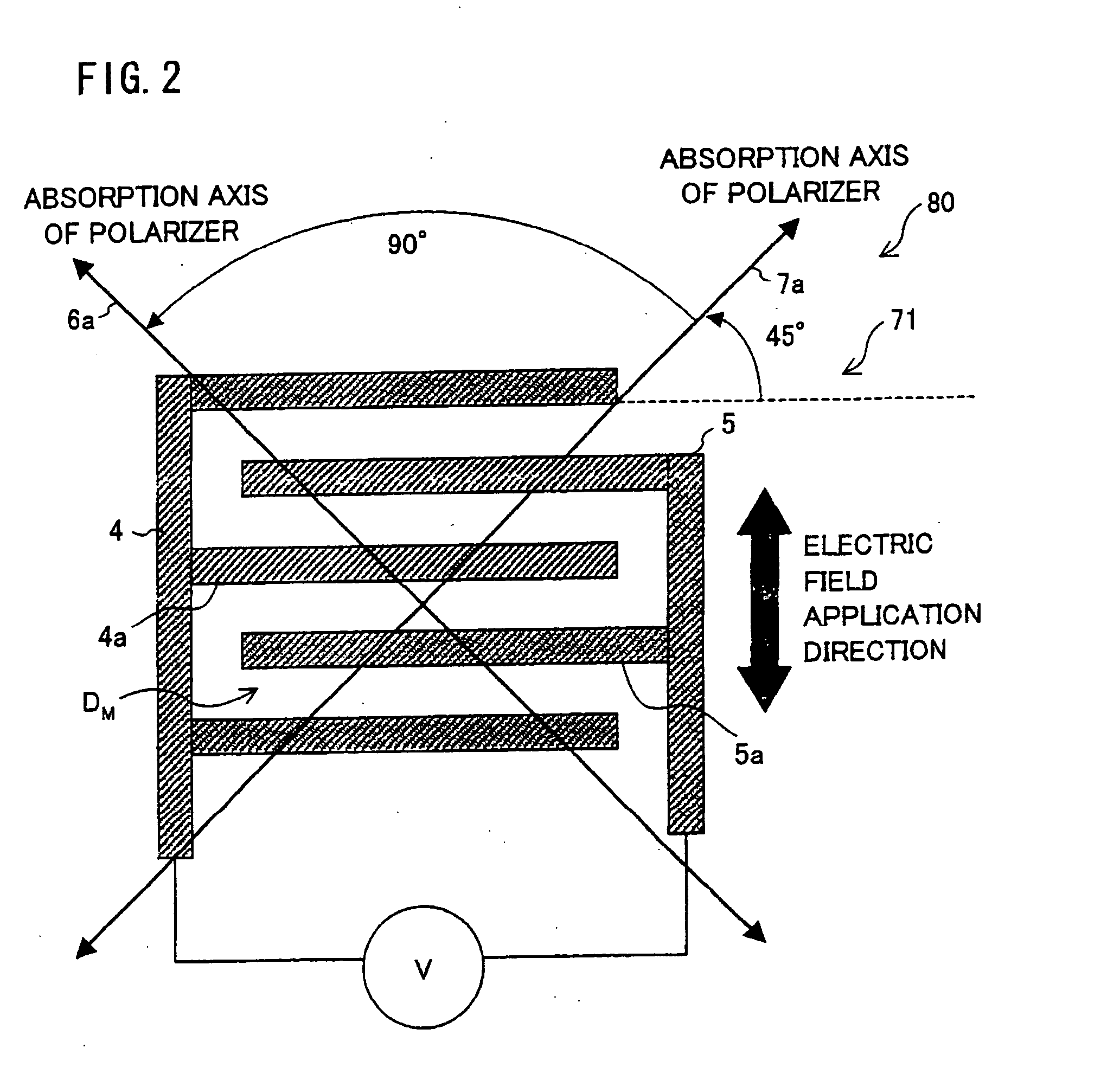Display element and display device
a display element and display device technology, applied in the field of display elements and display devices, can solve the problems of slow response of liquid crystal display elements using the tn mode, large hindrances to the tn mode, narrow viewing angle,
- Summary
- Abstract
- Description
- Claims
- Application Information
AI Technical Summary
Benefits of technology
Problems solved by technology
Method used
Image
Examples
Embodiment Construction
[0053] A non-limiting example embodiment is described in reference to FIGS. 1 to 16.
[0054]FIG. 1 is a cross-sectional view illustrating a schematic arrangement of various parts of a display element in accordance with the example embodiment. FIG. 2 is a view for explaining a relationship between an electrode structure and polarizing plate absorption axes in the display element. FIG. 14 is a block diagram illustrating a schematic arrangement of various parts of a display device using the display element in accordance with the example embodiment. FIG. 15 is a schematic diagram illustrating a schematic arrangement of one pixel of the display element illustrated in FIG. 14.
[0055] The display element in accordance with the example embodiment is provided in the display device together with a drive circuit.
[0056] As illustrated in FIG. 14, the display device 60 in accordance with the example embodiment is provided, e.g. with a display element 80 in which pixels 71 are provided in the for...
PUM
| Property | Measurement | Unit |
|---|---|---|
| thickness | aaaaa | aaaaa |
| thickness | aaaaa | aaaaa |
| diameter | aaaaa | aaaaa |
Abstract
Description
Claims
Application Information
 Login to View More
Login to View More - R&D
- Intellectual Property
- Life Sciences
- Materials
- Tech Scout
- Unparalleled Data Quality
- Higher Quality Content
- 60% Fewer Hallucinations
Browse by: Latest US Patents, China's latest patents, Technical Efficacy Thesaurus, Application Domain, Technology Topic, Popular Technical Reports.
© 2025 PatSnap. All rights reserved.Legal|Privacy policy|Modern Slavery Act Transparency Statement|Sitemap|About US| Contact US: help@patsnap.com



